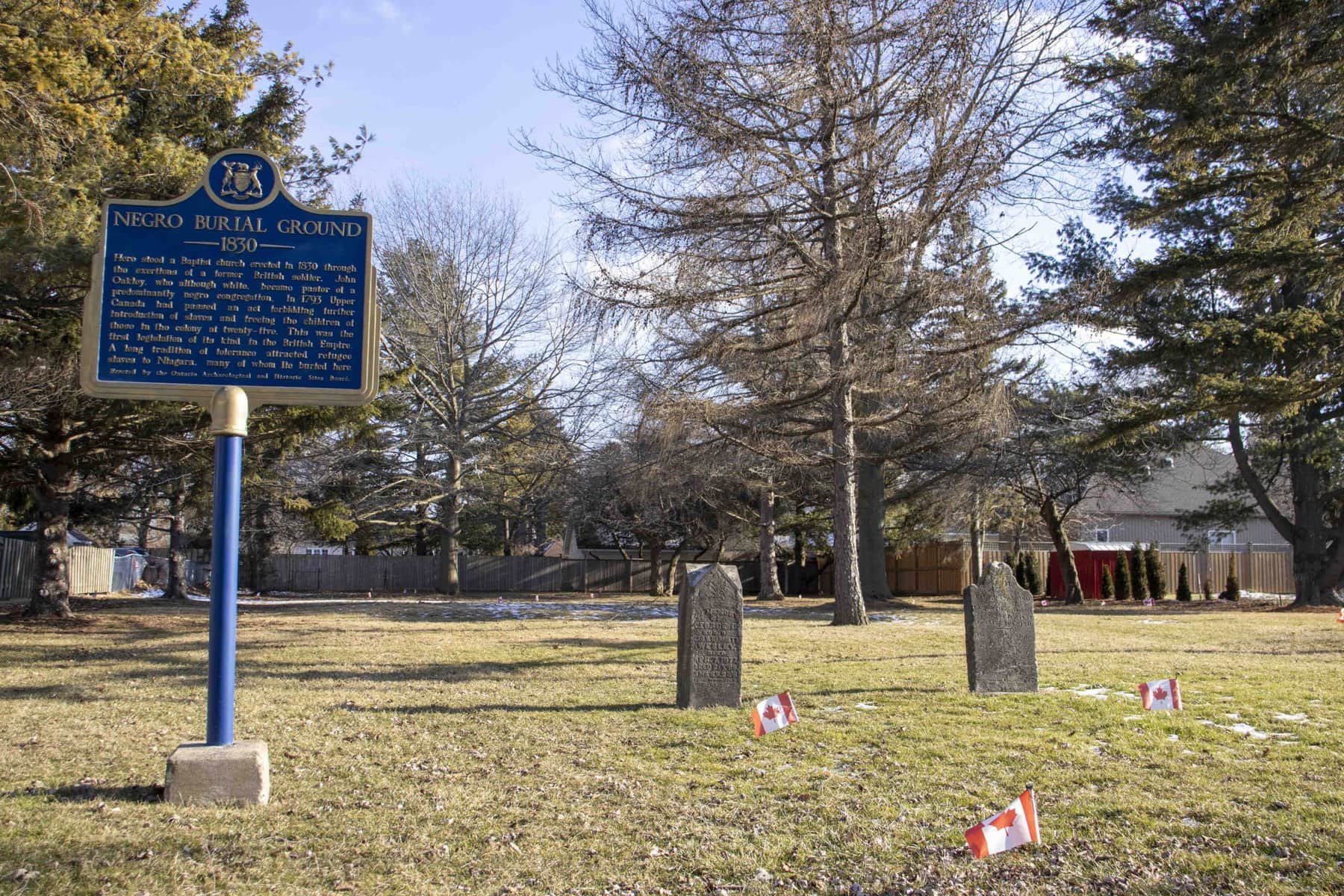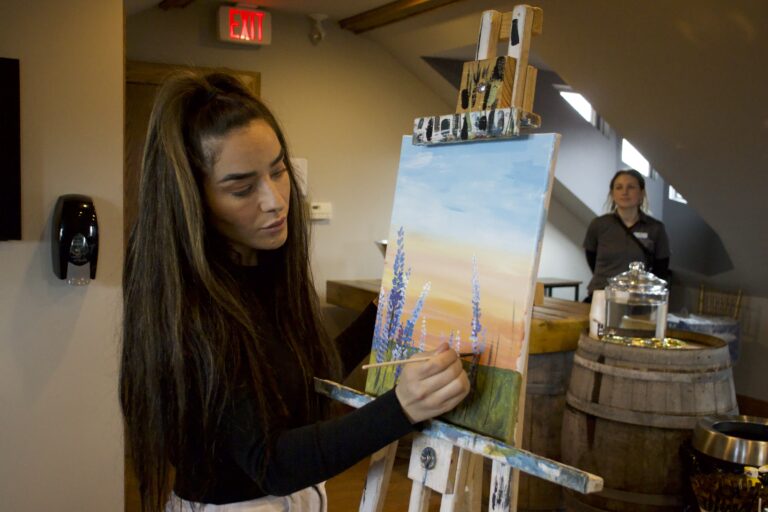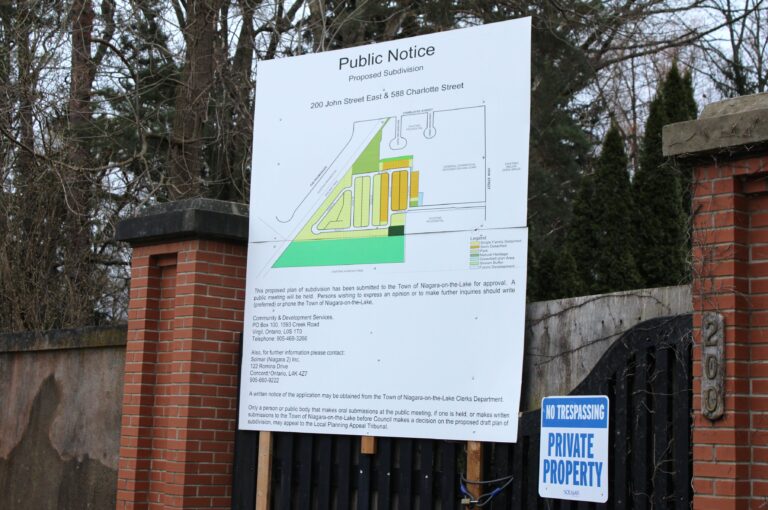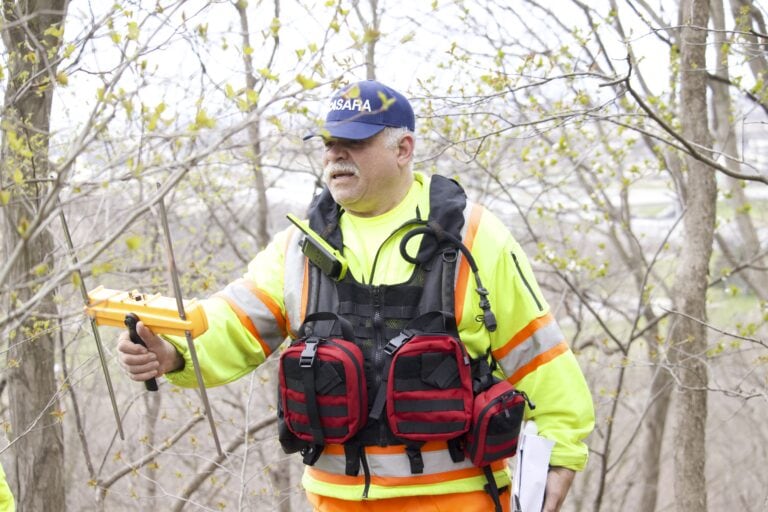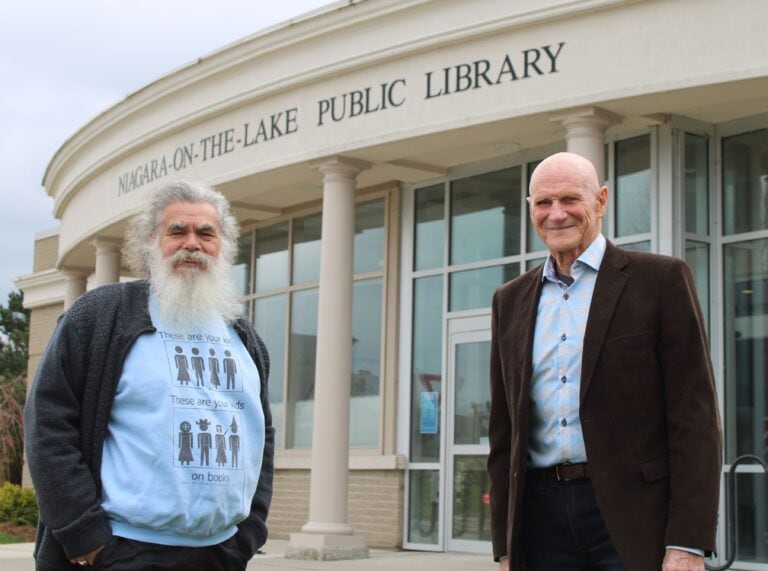Did they or didn’t they?
James Russell, a Toronto resident known for his restoration efforts at the Niagara Baptist Church Burial Ground, claims the town purposefully buried headstones at the cemetery many years ago.
Niagara-on-the-Lake chief administrator Marnie Cluckie denied it and said staff in the past did not bury any headstones, but that the gravestones were laid flat in an effort to preserve them.
Workers did their best to trim around them while maintaining the grounds, she said.
“Sometimes, inevitably, they become a bit covered in dirt,” added Cluckie.
There’s probably more diligence today than there was decades ago, she said.
Today, town workers do not lay down headstones and it is not a practice that has occurred in the last five to 10 years, Cluckie said in an email to The Lake Report.
The cemetery is a plot of land on Mississagua Street near Mary Street that was formerly known as the Negro Burial Ground.
Russell and his wife Marilyn have been involved with restoration efforts at the cemetery since 2021.
About 28 Black Canadian settlers – possibly more – are believed to be buried on the site, Russell said.
He isn’t convinced the town didn’t bury any headstones and that it happened years ago because “it’s not important to them.”
He said it’s the town’s responsibility to dig up the headstones and restore them.
“There’s just no way they just laid them down. They buried them. And they’re just refusing to take responsibility for that,” said Russell.
Cluckie said she doesn’t even know if any headstones are buried there.
“It’s possible that in years gone by, decades ago, they may have become buried, but I don’t know that,” she said.
Russell filed a complaint with the Bereavement Authority of Ontario, which administers the Funeral, Burial and Cremation Services Act.
“The Town of NOTL advised that there was no removal of existing monuments and markers from the graves in the cemetery in the last 30-plus years,” deputy registrar Michael D’Mello of the Bereavement Authority of Ontario told Russell in an email.
D’Mello also said that in the 1960s and 1970s, “some municipalities moved the unstable monuments that couldn’t be stabilized into cairns,” man-made piles of stones.
This was to ensure preservation and to make it easier to maintain the grounds. However, that practice has now stopped.
“Instead, unstable monuments are laid down at the grave itself to preserve the context of the grave monument,” David Brazeau, a communications officer with the Bereavement Authority, said in an email to The Lake Report.
“Cemetery operators, who do not have sufficient funds to stabilize monuments, must lay them down due to safety concerns,” he added.
Brazeau also noted that out of the 5,300 licensed cemetery sites in the province, about 2,800 are maintained by municipalities.
These are “predominantly inactive sites with little or no funds for maintenance,” he said.
Cluckie agrees that it’s hard for municipalities to preserve headstones and maintain abandoned cemeteries when there isn’t enough funding.
This is something the town has been advocating for, she said.
“But rural municipalities in particular are faced with a lot of increased financial burden and limited resources in order to maintain them in the way that you would want,” she added.
If the town had enough money, then the headstones would be restored and properly preserved, she said.
Municipalities can’t do that without funding.
Russell said the town should be able to come up with the money to unearth and restore the headstones.
“One of the richest countries in the world, find the money,” he said.
He said he plans to make a PowerPoint presentation and send it to the Canadian Museum of Human Rights.
“I think that perhaps there’s a misunderstanding or mis-characterization of what’s happening at the cemeteries,” said Cluckie.
“It falls to the fact that headstones become old and weathered. And then they have to be laid out flat so they don’t break,” she added.



